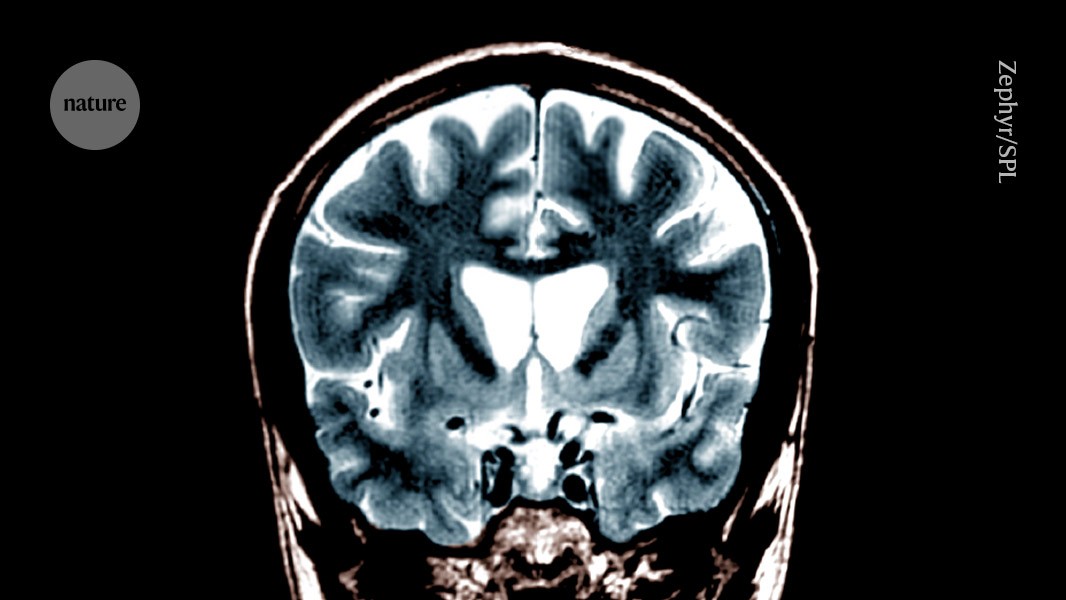
A brain scan of a person with Huntington’s disease, which causes a loss of brain volume as neurons are killed off by the accumulation of a mutant protein.Credit: Zephyr/SPL
A groundbreaking gene therapy has shown promise in dramatically slowing the progression of Huntington’s disease, offering hope for an unprecedented treatment to change the course of this inherited neurological disorder.
In a small clinical trial involving 29 participants in the early stages of the disease, those who received a high dose of the therapy directly into their brains experienced a remarkable 75% reduction in disease progression over three years compared to those in a control group.
Genetic therapies offer new hope against incurable brain diseases
According to data released this week by uniQure, a gene-therapy company based in Amsterdam, the benefits were statistically significant across various clinical measures. Researchers also noted a decrease in levels of a toxic protein associated with neurodegeneration in the spinal fluid of treated participants. Given these promising results, uniQure plans to seek regulatory approval for the treatment next year.
“This gene therapy marks a significant advancement,” says Sandra Kostyk, a neurologist at the Ohio State University Wexner Medical Center in Columbus and one of the trial investigators. “The data looks quite promising.”
While slowing disease progression could lead to several more years of independence for those with Huntington’s, Kostyk cautions that it is not a cure. She emphasizes the need for further research, as the trial only involved a small number of participants and the results are still unpublished. “We need more time and more data,” she adds.
A Deadly Cycle
Individuals with Huntington’s disease generally see their symptoms worsen over time, typically beginning between the ages of 35 and 55. Early signs may include subtle coordination issues or memory lapses, which can escalate to involuntary movements, severe mood swings, and cognitive decline.
The condition is caused by excessive DNA repeats in a gene known as huntingtin, resulting in a defective protein that gradually damages the brain. Currently, no treatments exist to target the underlying cause, leaving those with the mutation reliant on medications to manage symptoms.
Earlier attempts to develop treatments focused on antisense therapy, which used short strands of DNA or RNA to reduce the production of the harmful huntingtin protein. Initial trials showed promise; however, hopes were dashed in 2021 when a leading candidate underperformed in late-stage trials, with patients receiving the treatment faring worse than those on a placebo 1.
As a result of this setback, attention shifted towards gene therapy, which aims for a one-time solution that permanently silences or modifies the defective gene at its source.
Molecular Muzzle
In the case of uniQure’s gene therapy, a harmless virus is used to deliver the instructions for creating a short RNA sequence known as microRNA directly into the brain cells affected by Huntington’s disease. This microRNA is designed to “muzzle” the harmful huntingtin gene by blocking its molecular instructions, preventing the production of the faulty protein. The virus’s instructions remain in the cells, which continue to produce the therapeutic microRNA. The discovery of microRNAs was honored with a Nobel Prize last year, though the technology has yet to produce any approved treatments.
Administering this therapy requires a complex surgical procedure where doctors use magnetic resonance imaging to carefully place a cannula through small holes in the skull. The therapy is slowly infused into the striatum, a brain region that is one of the first to be affected by Huntington’s disease.
Summary: A new gene therapy has shown promise in slowing Huntington’s disease progression by 75% in early trials, marking a significant advancement in potential treatment options. Though it is not a cure, this approach focuses on silencing the defective huntingtin gene through the delivery of microRNA, representing a hopeful step forward in addressing this challenging neurological disorder.






